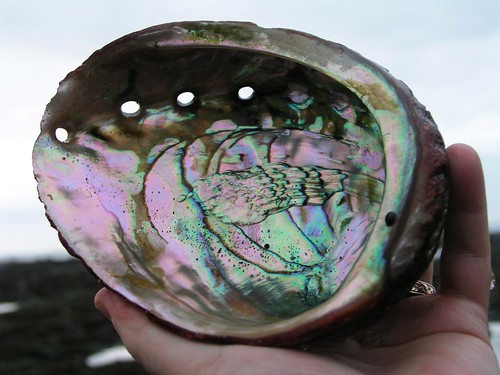Tough Coatings for Airplanes
Posted by Big Gav in abalone, air transport, biomimicry, energy efficiency
Technology Review has an article on some biomimicry inspired design work to enable lighter, more fuel efficient aircraft - Tough Coatings for Airplanes.
For decades, materials scientists have looked to naturally existing composites as inspiration for tough, lightweight materials that could lighten vehicles. Such materials could save on fuel costs, protect airplanes, and be used in engine turbines that run more efficiently. The material that lines abalone shells, called nacre, has been of particular interest: it's lightweight and strong, yet shatter-resistant. But mimicking the microscale structures responsible for its properties has been difficult, and hasn't resulted in materials that can be manufactured on a large scale.
Now researchers in Helsinki, Finland, have developed a simple method for making large-area, nacre-like papers and coatings that could be painted on building walls and airplane skins for lightweight reinforcement. The researchers will work with the Finnish paper company UPM to commercialize the material.
"The excitement with nacre is that its properties are impressive when you consider what it's made out of: calcium carbonate and a protein," says Robert Ritchie, chair of the materials science and engineering department at the University of California, Berkeley, who is not involved with the coatings research. Nacre's combination of interconnected plates of a very hard but shatter-prone material with an infill of a very soft but ductile material results in a composite whose properties are better than the sum of its parts. By starting with better materials, such as industrial ceramics and polymers or metal, it should be possible to make a synthetic composite whose properties are even better than those of nacre.
Most efforts to mimic the nacre structure's combination of hard and soft materials have centered on structural materials that could provide a lightweight alternative to steel in building and vehicle frames and engine turbines. Steel is tough--that is, it doesn't fracture when it's stressed. Materials such as ceramics can't be used for structural applications because they're not tough. They can hold up under the stress of a great weight, but they're prone to shattering. Last year, for example, Ritchie's group made a nacre-like material that is the toughest ceramic ever made. In the form of a coating, such a strong, tough material could reinforce walls and airplane skins without adding significant weight. Previous work on making tough biomimetic coatings has stayed in the lab because these materials involved very laborious processes, such as dipping a glass slide in two solutions 1,800 times, to make thin coatings over small areas.






